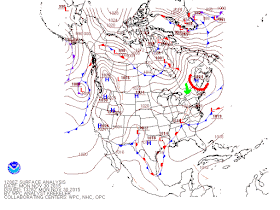These are the twelve eight images that summarize my photographic moments of 2015. In the past, I scoured through my files and pulled out the images that highlighted my travels or personal favourite moments. In 2015, I found myself pulled towards non-photographic endeavours, so the selection is somewhat limited. No complaints here!
A brutally cold winter was exciting for both meteorology and photography. More and more I find my birding and photography are tied to interesting meteorological events - sometimes seeing or photographing very little but having a blast enjoying the weather. The flock of ducks (below) really showed how difficult life could be in the frigid weather - locked into a tiny pool on Lake Ontario.
2015 was also the year I partook in my first "big year"! The final tally was 196 species - all from my condo. I don't mean to spoil the fun, but it really wasn't much of an effort. I knew I would be home for extended periods and kept track of the birds I saw... The best days in spring and fall were spent birding elsewhere... I hope this revelation doesn't ruin anything regarding my 2016 efforts.... Anyways - this Wood Duck is my favourite bird image from the condo in 2015.
Eurasian Tree Sparrow - in flight! Given my limited availability, I was really happy with my ability to predict some exciting birding weather in May and make the most of two 2.5 day visits to the Pelee peninsula. Not only "rarity weather" - but volume days as well.
A fall trip to Pelee went exactly as planned with huge numbers of Monarchs roosting at the tip (thousands). If I ever get around to it, I have a LOT more photographs to share from the adventure.
Lunar Eclipse!
So that's all she wrote. I hope everyone has a great 2016!













































